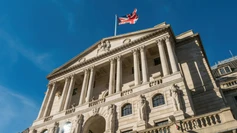Economic outlook for the UK - Q1 2024
The economic outlook for the UK looks challenging, with growth set to remain constrained by high interest rates and the on-going squeeze from a still tightening fiscal policy.

The 2024 economic outlook for the UK looks challenging. Growth looks set to remain constrained by high interest rates and the on-going squeeze from a still tightening fiscal policy. And while we expect a recession to be avoided, this is by no means assured. Monetary policy will remain tighter, and for longer, than in the United States (US) and European Union (EU) as the Bank of England (BoE) continues to battle stubborn inflationary pressures. But the winner from this will be sterling, which should benefit from an interest rate differential that will increasingly move in its favour over the course of the year.
The UK growth outlook looks difficult
Economic activity over Q1 will remain subdued, as the economy struggles for momentum under the twin burdens of high interest rates and a tightening fiscal policy. The resilience being seen in inflationary pressures is preventing any loosening in monetary policy while an increase in the primary fiscal surplus of 1.6% GDP forecast for the 2024/25 financial year will effectively drain further spending power out of the economy. Worryingly, the fall in output seen in 2023 Q3 was broad based, with both households and businesses reducing spending as they responded to higher borrowing costs. Until interest rates start to fall, this heightened propensity to replenish savings and pay down debt will continue. Accordingly, while we still expect a recession to be avoided, the risk of such an outcome remains significant.
Mortgage re-financing will continue to drag on growth
The impact of higher mortgage rates will continue to exert a drag on growth, albeit a burden that will start to weaken over the course of 2024 as mortgage rates finally start to head lower. However, households will still be re-mortgaging at rates considerably higher than they are currently facing and will accordingly face a significant reduction in available disposable income. Further, any reduction in mortgage rates over 2024 will be offset to a large degree by lower earnings on savings deposit accounts held by non-mortgaged households – around 70% of the total. Accordingly, any boost to consumer spending from the loosening in monetary policy expected over H2 is likely to be muted.
Monetary policy set to remain tight
Monetary policy will remain relatively tight over the course of 2024, with interest rates forecast to remain higher compared to over developed economies, as the BoE faces a longer and more protracted battle to bring CPI back to target. Rates are expected to remain unchanged until at least late H1 as the BoE takes time to assess the impact of 2024 wage negotiations (many large employers fix annual pay rises early Q1) and the March Budget. Accordingly, the message of a restrictive monetary policy is expected to remain in place over Q1, with concomitantly only around 75bps of cuts seen over the course of H2.
Capital expenditure set to fall further
Capital expenditure looks set to decline further over the course of 2024 as the corporate sector continues to retrench in the face of higher borrowing costs. With some four-fifths of business loans on floating rates, borrowing costs are still more than double the average levels seen at end 2021. How far and fast capex plans recover will be very much dependant on how quickly consumer demand recovers and how fast borrowing costs fall. On a more positive note, the overall business environment is becoming more favourable, as the uncertainties associated with Brexit and the disruptions attributable to the Covid pandemic continue to fade. But overall a further, albeit modest, decline in gross fixed capital formation is expected over 2024, with the largest contractions expected over Q1 and Q2, presenting a significant H1 headwind to growth.
Signs of slack are finally showing in the labour market, but wage rises remain concerning
Wages growth remains too high for comfort for the BoE, with pay continuing to grow at a pace incompatible with a 2% CPI target. However, the growing signs of slack now being seen in the labour market can be expected to present downwards pressure on wages growth as workers focus more on job security rather than maximising remuneration, with this slowing pace of growth allowing the BoE to conclude that monetary policy can be eased gradually over H2 without jeopardising the objective of returning CPI back to target. Very much the key consideration for the BoE will be how fast wages fall in the services sector, given its size in the UK economy and the fact that wages are typically the major cost component for most services sector firms. A significant reduction in wages pressures here will translate into a quickening pace of decline in core CPI.
Inflation should continue to ease over 2024, but only slowly
Inflationary pressures are expected to continue to recede over 2024, but progress will be slow, and the UK’s performance here will be more measured than in the US and EU. Although the rate of headline CPI has now fallen below 4%, both the core and services rates remain concerning and have together largely prevented the BoE from engaging in any talk about a possible relaxation in its policy stance. No guidance has been given on how far CPI must fall before rates might be cut, but having got the transitory inflation argument so wrong, the BoE will likely keep policy tighter for longer than seen in previous cycles.









